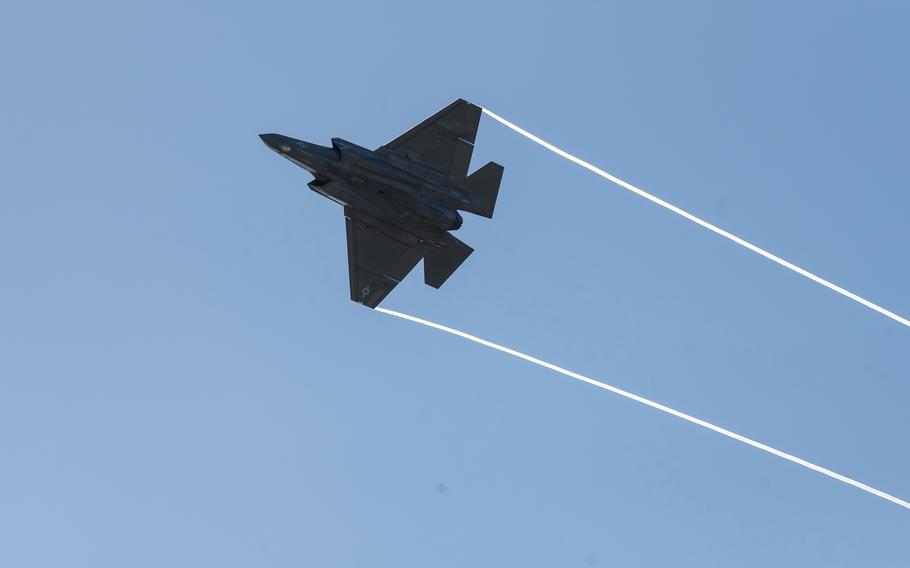
A Hawaii Air National Guard F-22 Raptor takes off from Hickam Airfield, Hawaii, during Sentry Aloha, Jan. 19, 2024. (Mysti Bicoy/U.S. Air Force)
FORT SHAFTER, Hawaii — Aircraft from California and Australia are in Hawaii through Wednesday conducting combat training with Honolulu-based F-22 fighters.
Hosted by the Hawaii National Air Guard’s 154th Wing, Sentry Aloha is tailored to provide realistic combat training, Maj. Michael Oliver, the exercise director and a pilot with the wing, said by phone Friday.
“This is a pretty tactical-level exercise,” he said.
The scenarios focus on building readiness for the F-22 pilots of the wing’s 199th Fighter Squadron and the Air Force 19th Fighter squadron based at Joint Base Pearl Harbor-Hickam.
Joining the exercise this year are F-35 Lightning II jets from Test and Evaluation Squadron Nine, Detachment Edwards Air Force Base, Calif.
Air Test and Evaluation Squadron Nine China Lake, Calif., sent F/A-18 Super Hornets and EA-18G Growlers.
The Australian air force flew in an E-7A Wedgetail, an aircraft used for airborne battle management.
The exercise involves about 712 personnel and 46 aircraft.
The drills, most of which take place in a vast airspace about 30 miles south of Oahu, are primarily defensive counter air and escort missions, Oliver said.
An example of the former is defending a “high-value airborne” asset such as the RAAF’s E-7, he said, adding it can also mean defending ground or maritime assets.
“We’ve also been escorting C-17s,” he said.
“In the first week we were actually able to integrate with an aircraft carrier and pretend-escort their carrier-borne aircraft in the airspace we train in,” he said.
“We also integrated and are still integrating with various destroyers from [U.S. Pacific Fleet],” he said.
The U.S. Navy and Australian air force working together is key to maintaining the U.S. Indo-Pacific Command mission to maintain “a free and open” region by working as a joint force, Oliver said.
Hawaii offers ample airspace to do that kind of aerial training, but its remoteness means fighter pilots have fewer chances to fly beside — or “against” — counterparts from U.S. bases or elsewhere.
“One of the limitations of being in Hawaii with the F-22s is that we don’t have any dedicated red air,” Oliver said, referring to so-called “aggressor” fighter squadrons that pose as enemy aircraft for training scenarios.
Sentry Aloha is an opportunity to gather enough fighters to assemble a temporary aggressor team, he said.